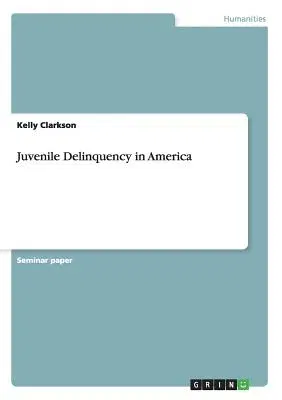Seminar paper from the year 2012 in the subject Sociology - Children and
Youth, grade: A, State University of New York at Stony Brook, language:
English, abstract: Juvenile delinquency has been ranked as one of the
most serious problems facing the United States today. It has become a
national problem, as opposed to being restricted to the large cities.
The nature of juvenile delinquency has changed over time such that the
delinquent activities being engaged in by the juveniles have changed
over the years. The relevant juvenile justice agents have attempted to
prevent and control this vice. However, it seems like more still needs
to be done are the methods that have been employed have not yielded the
desired results. (Muraskin & Roberts, 2005) There is no universally
accepted definition and approach of addressing juvenile delinquency. For
instance, to the criminologists, juvenile delinquency entails all public
wrongs committed by the young between the ages of 12 and 20.
Sociologists take a broader approach since they postulate that
delinquency includes many violations of legal and social norms,
including minor offences, serious crimes, committed by juveniles. The
sociologists the specifics of youth deviant behavior with the home,
peers, family, neighborhood, as well as other variables which, influence
the formation of young people's social environment. It is against this
backdrop that this paper seeks to delve into the issue of juvenile
delinquency by looking at its causes, prevention, control and the way
forward. (Muraskin & Roberts, 2005)


